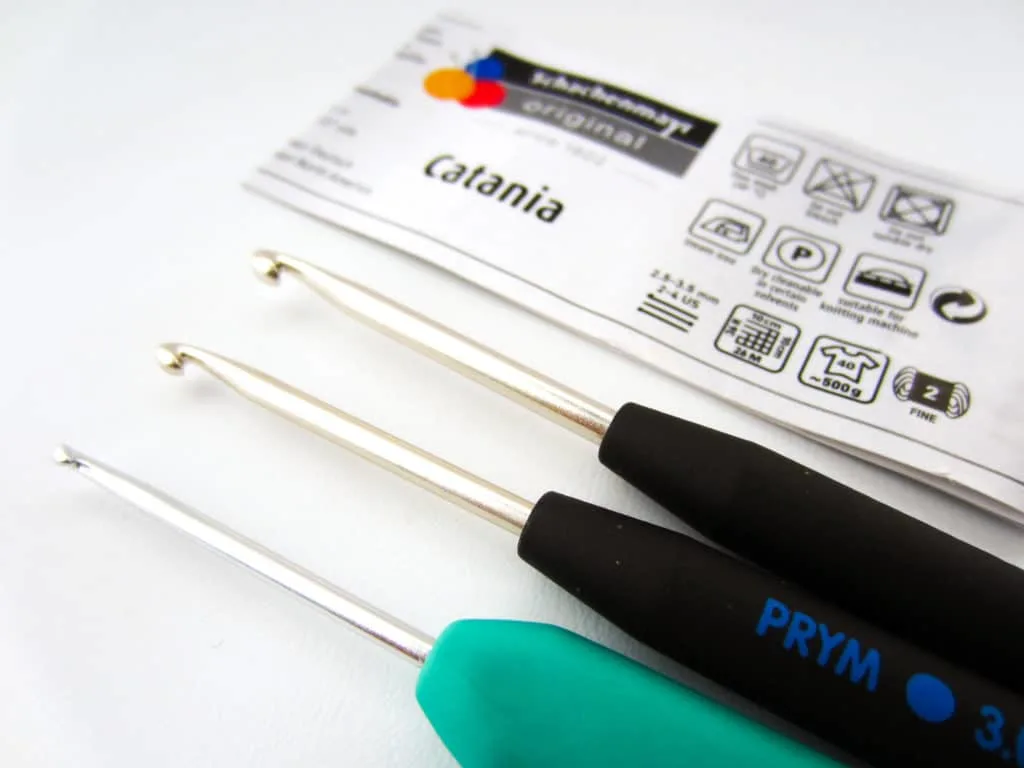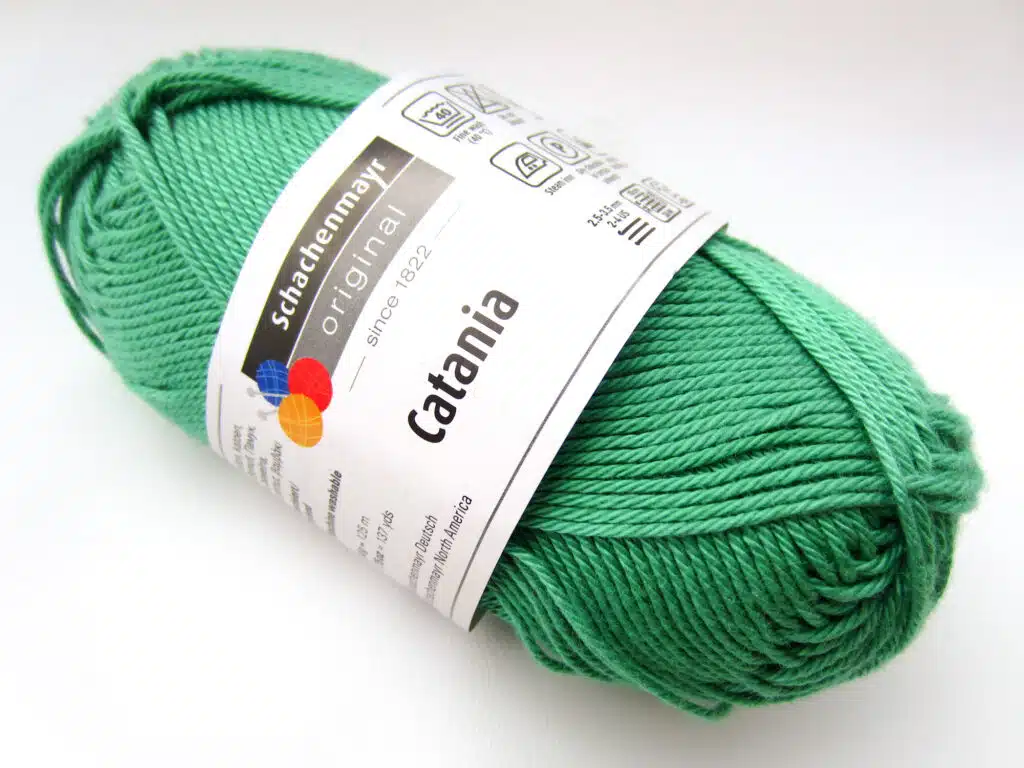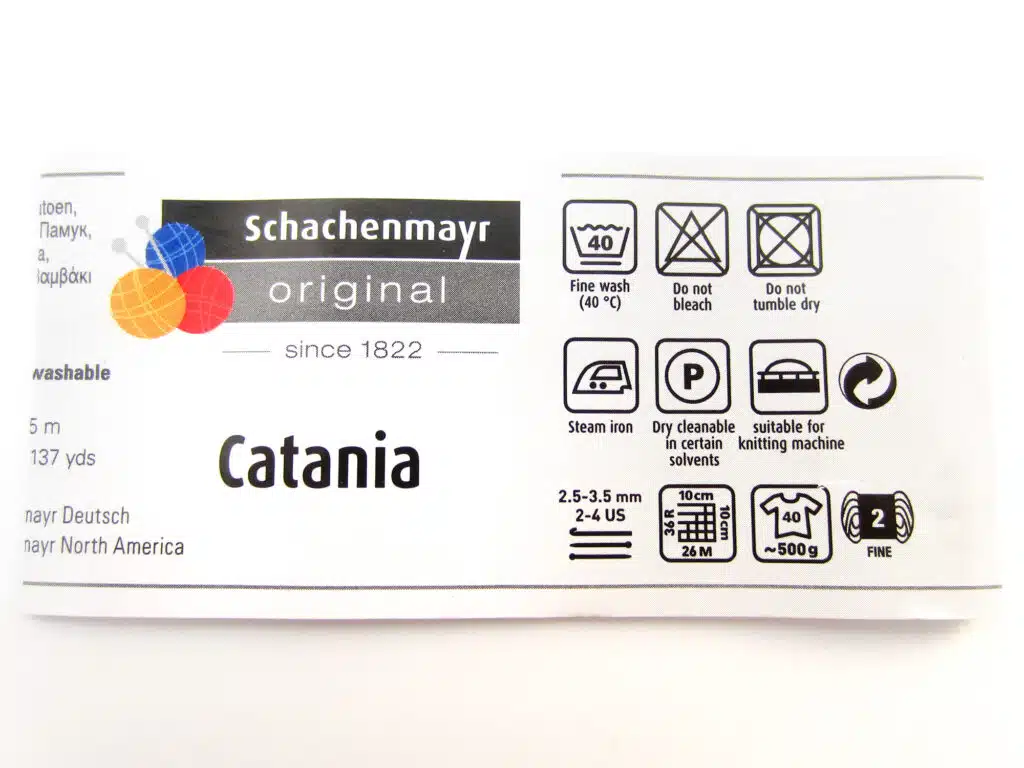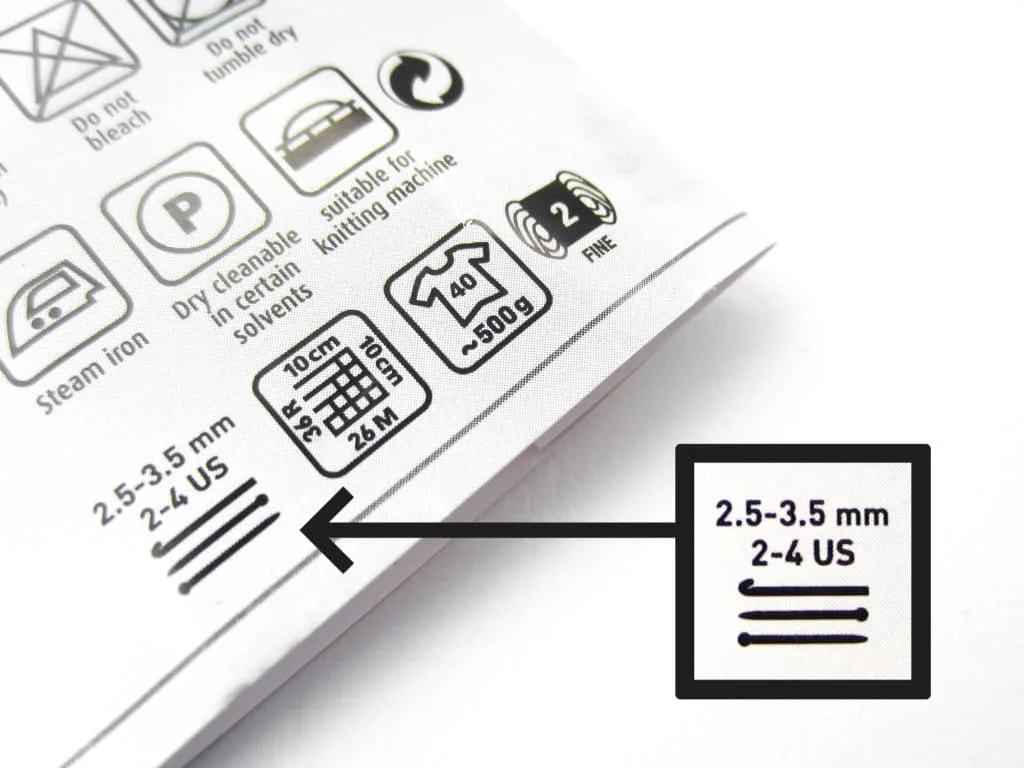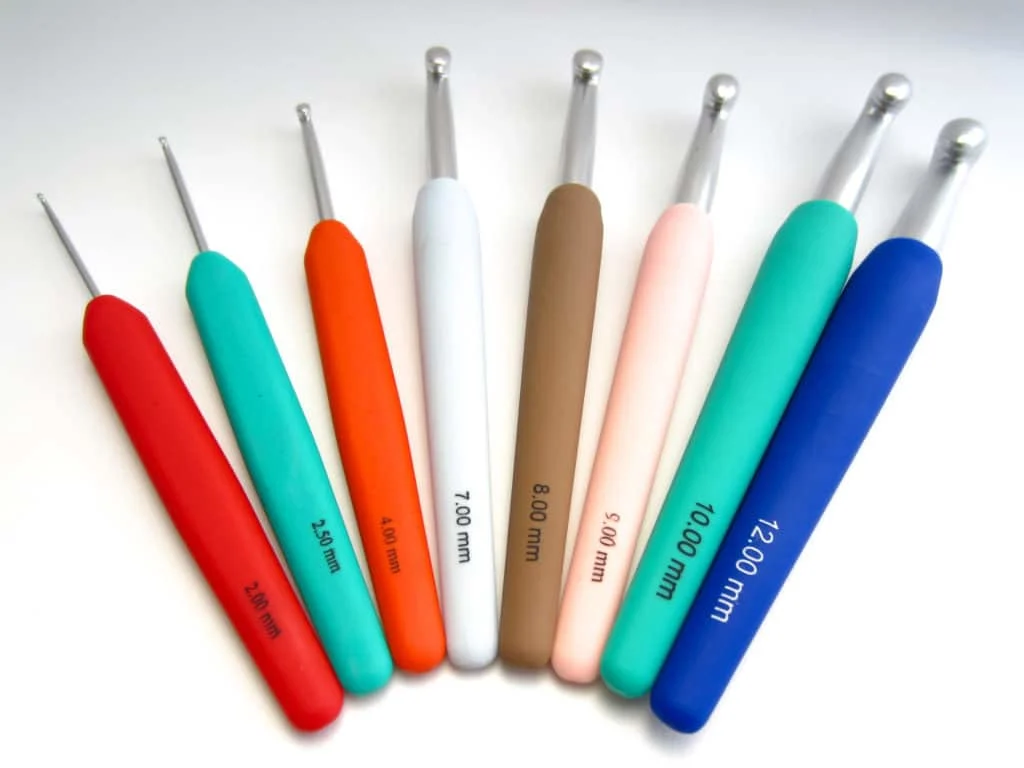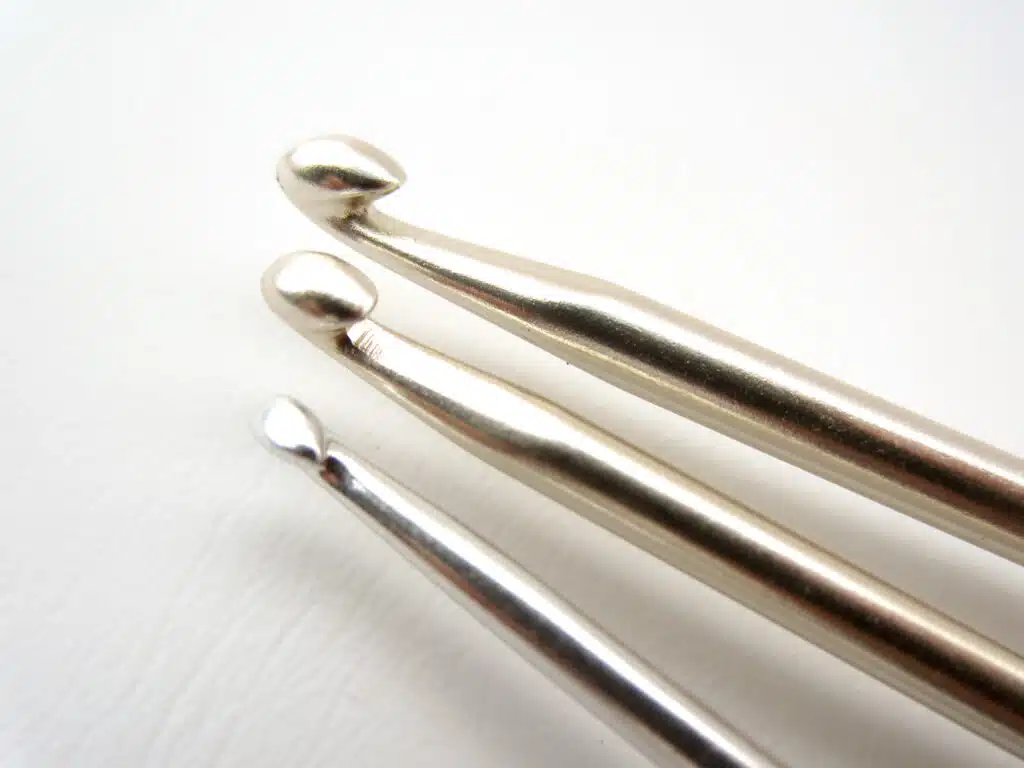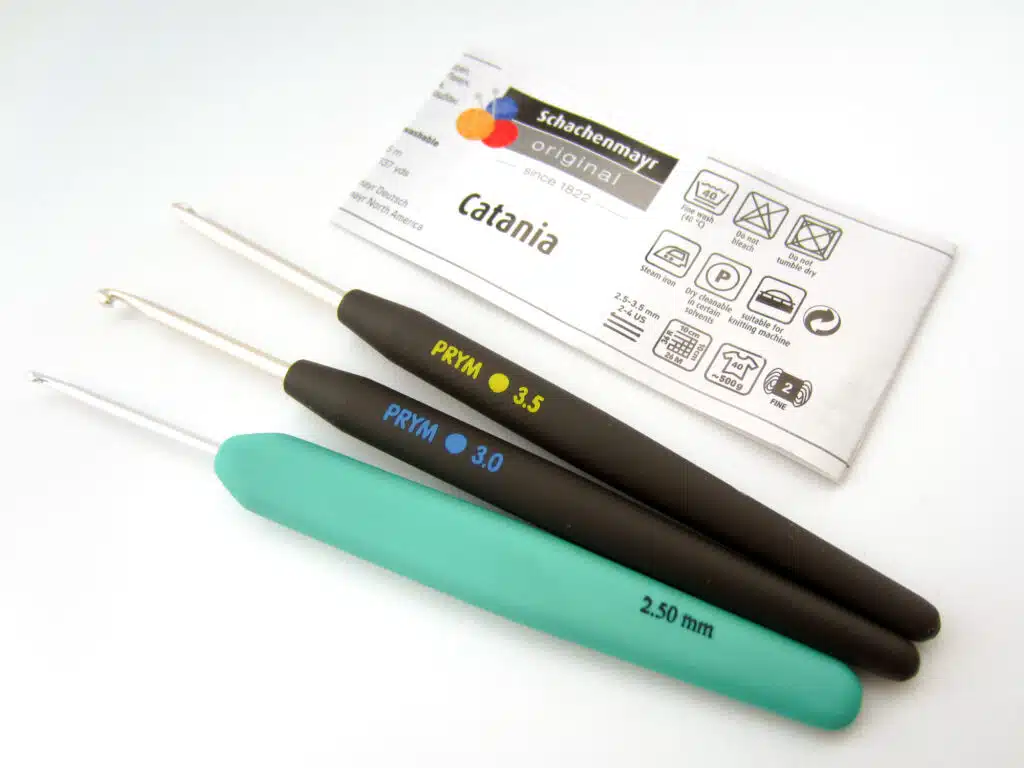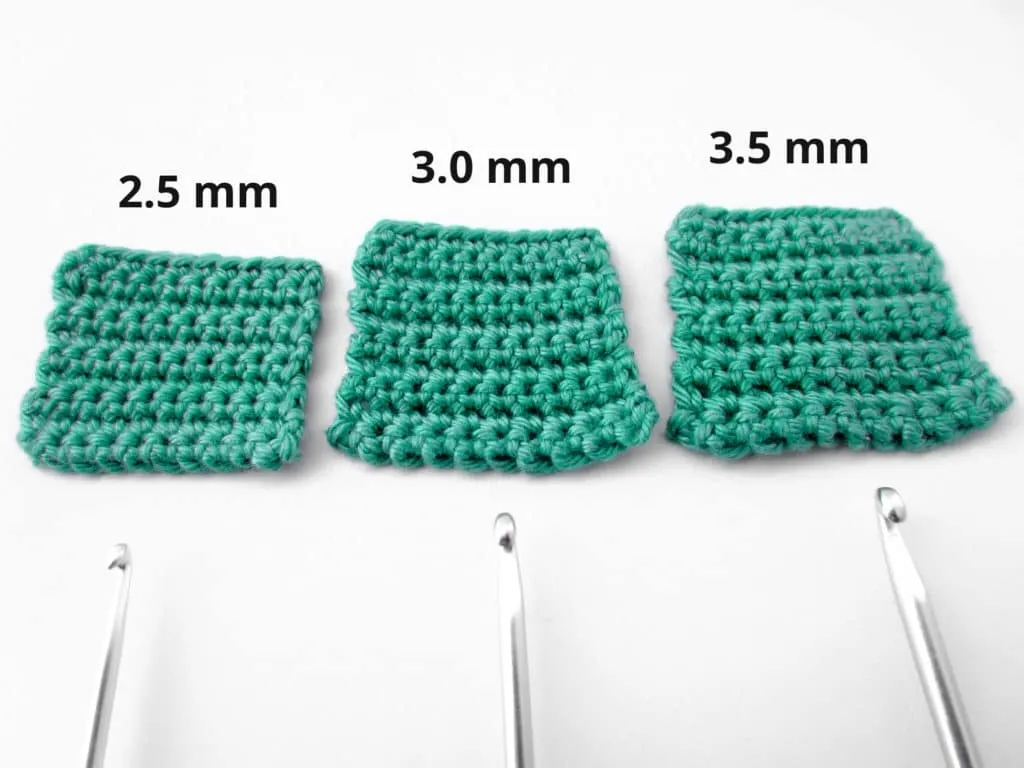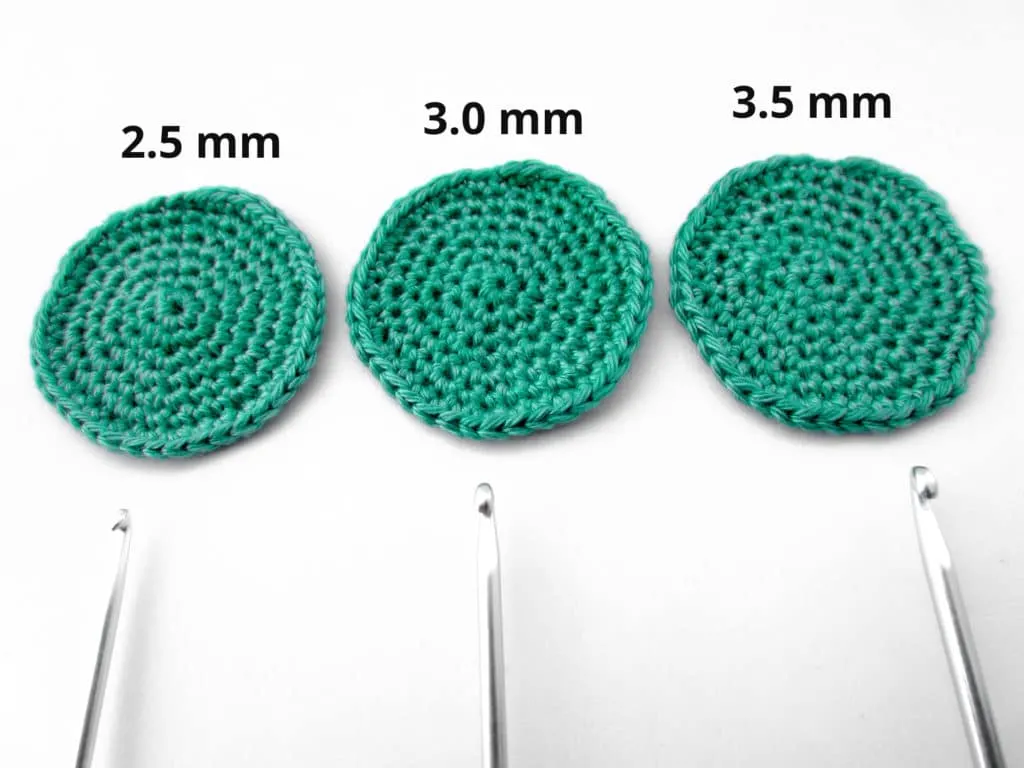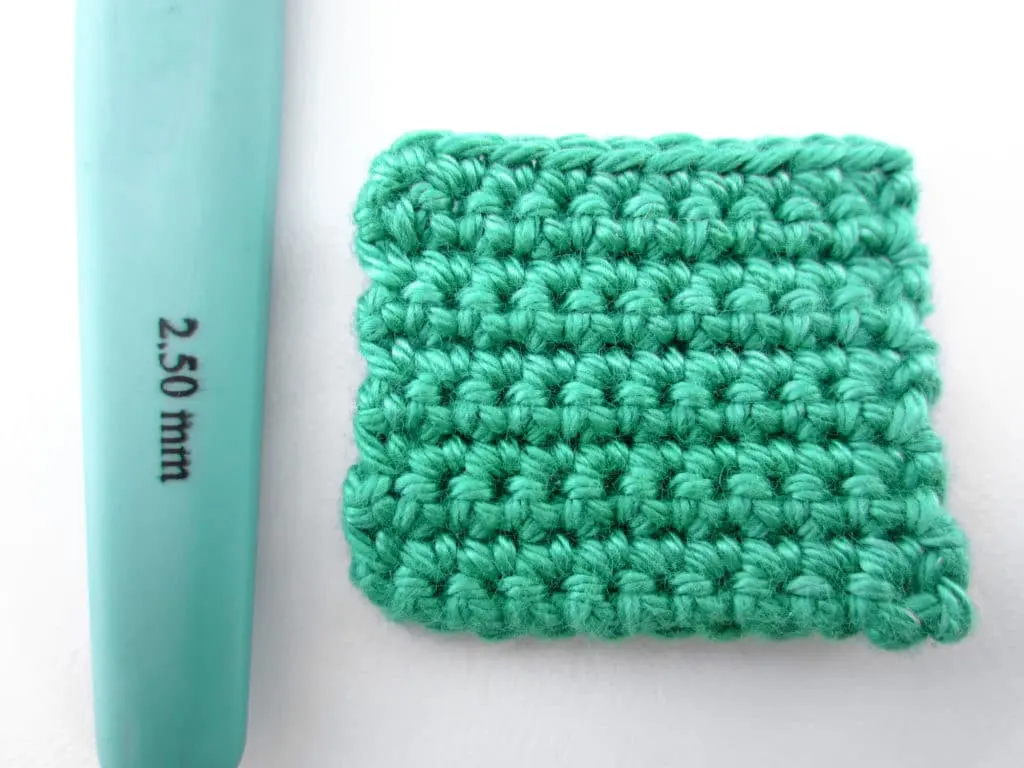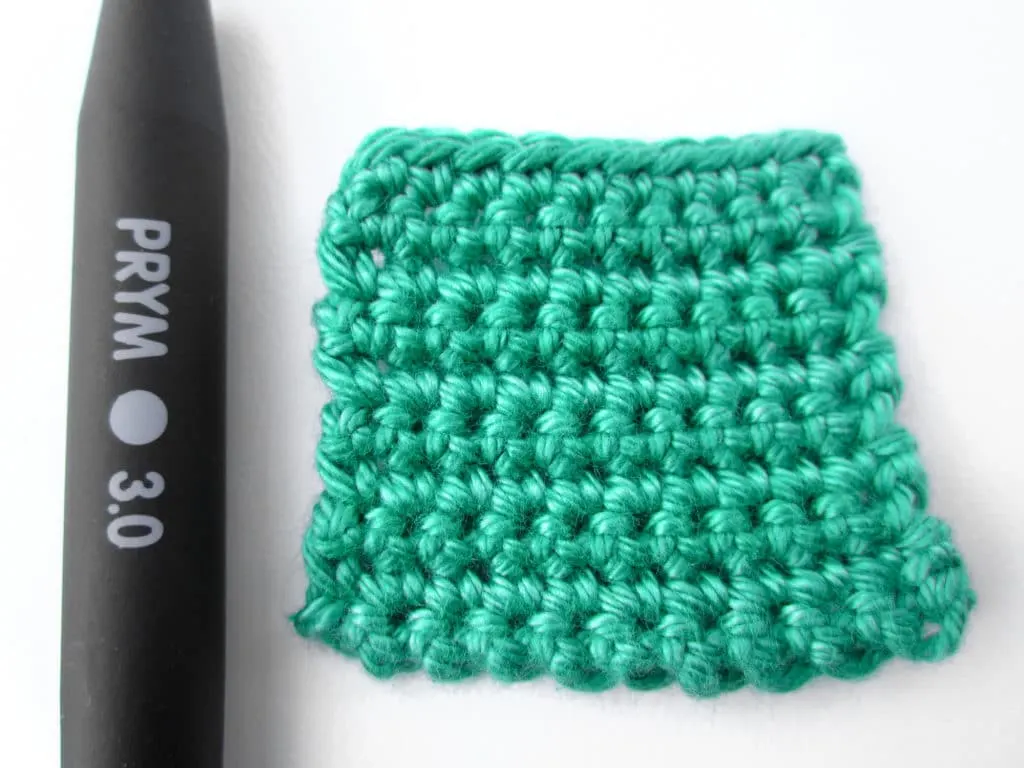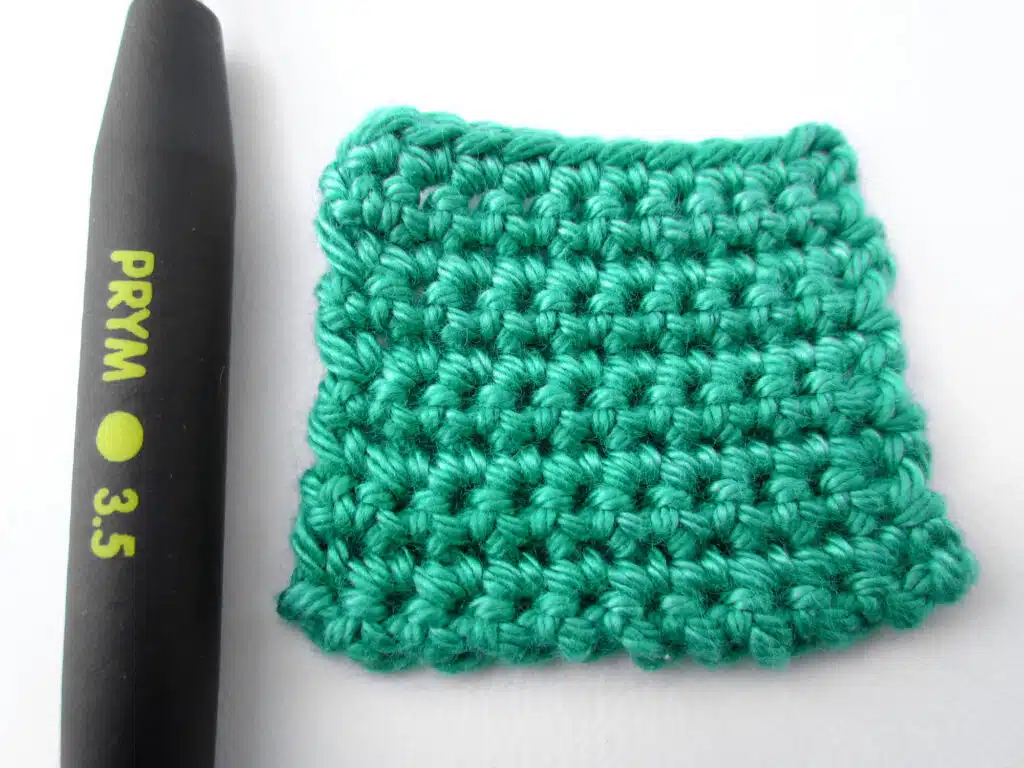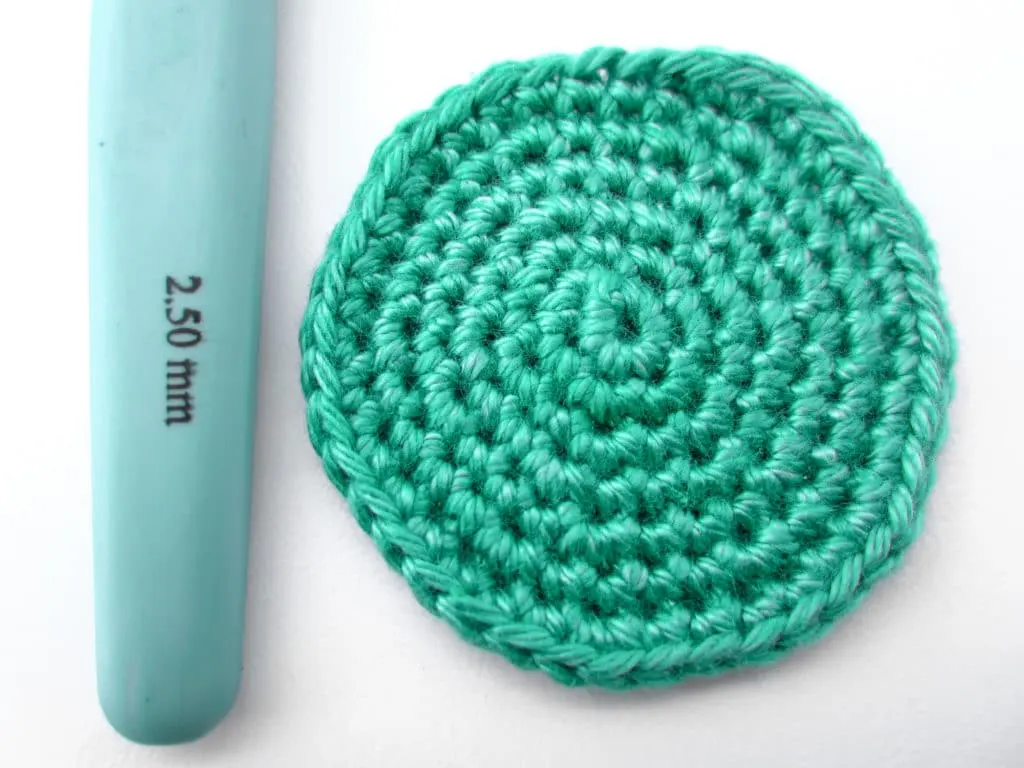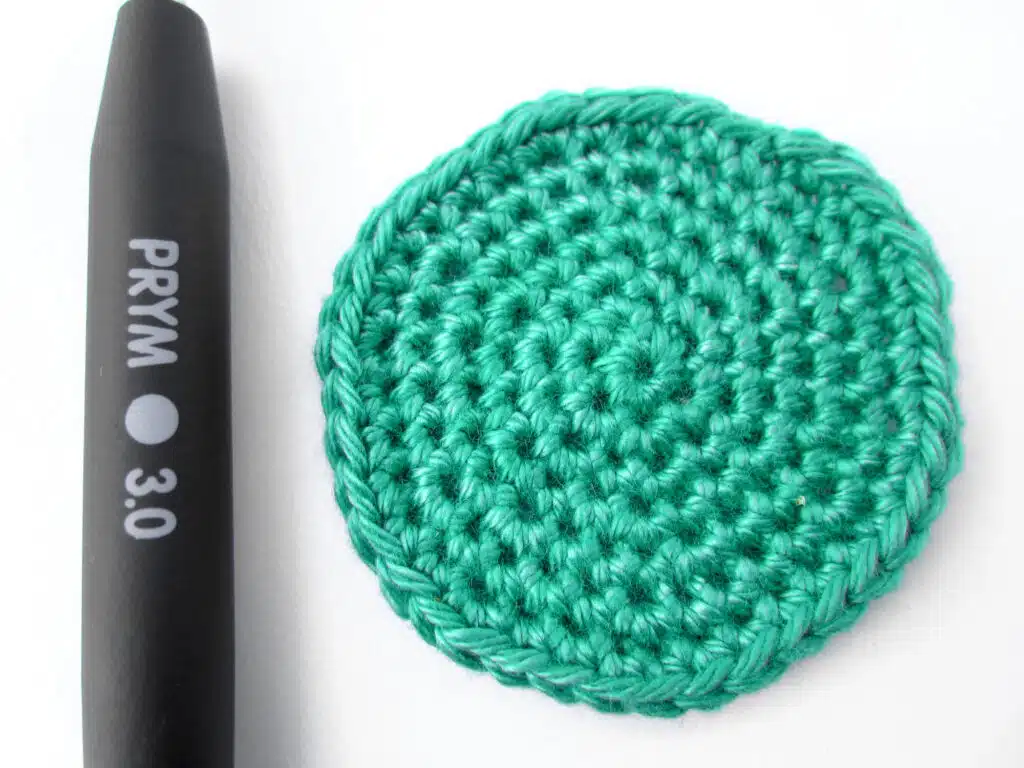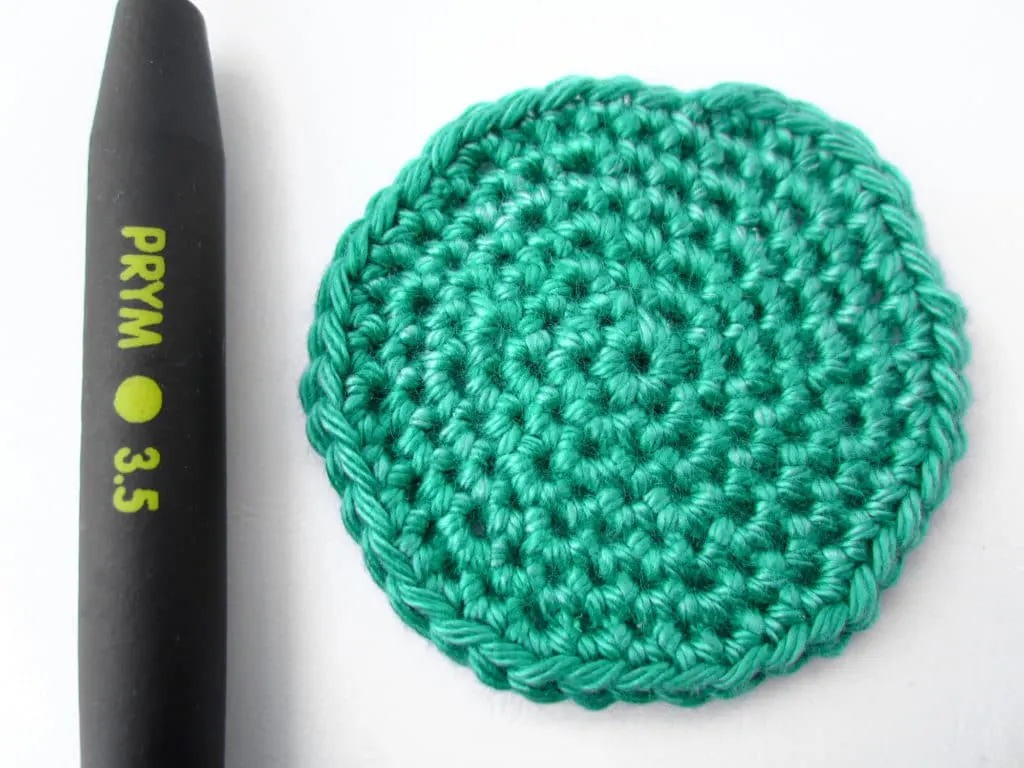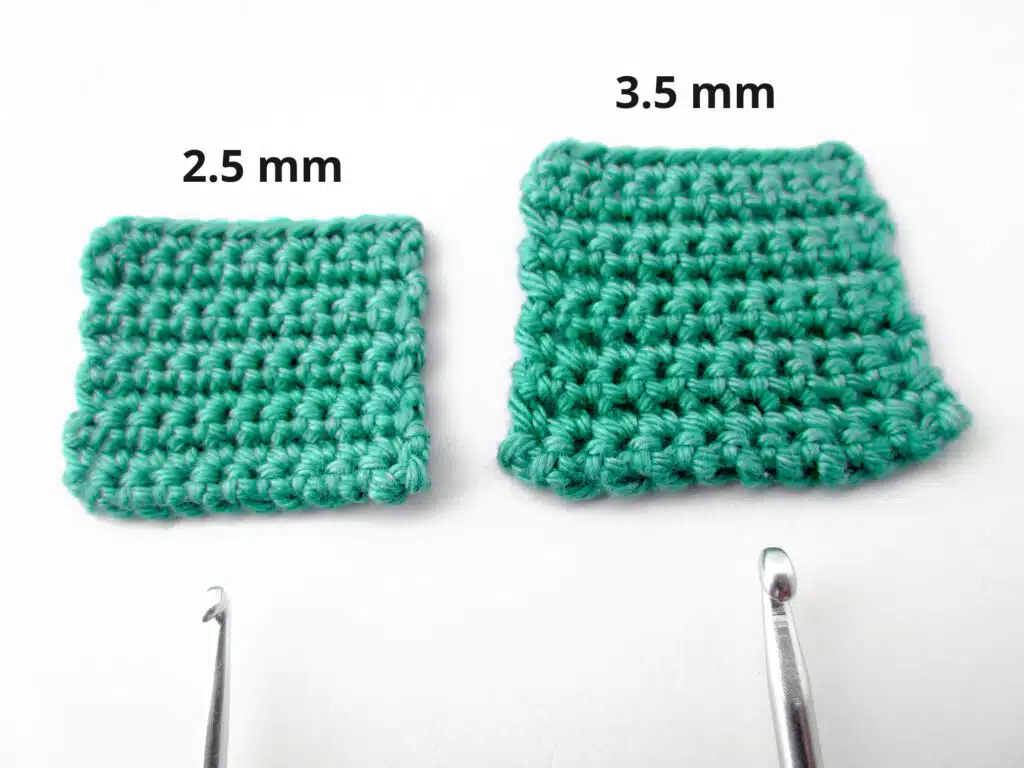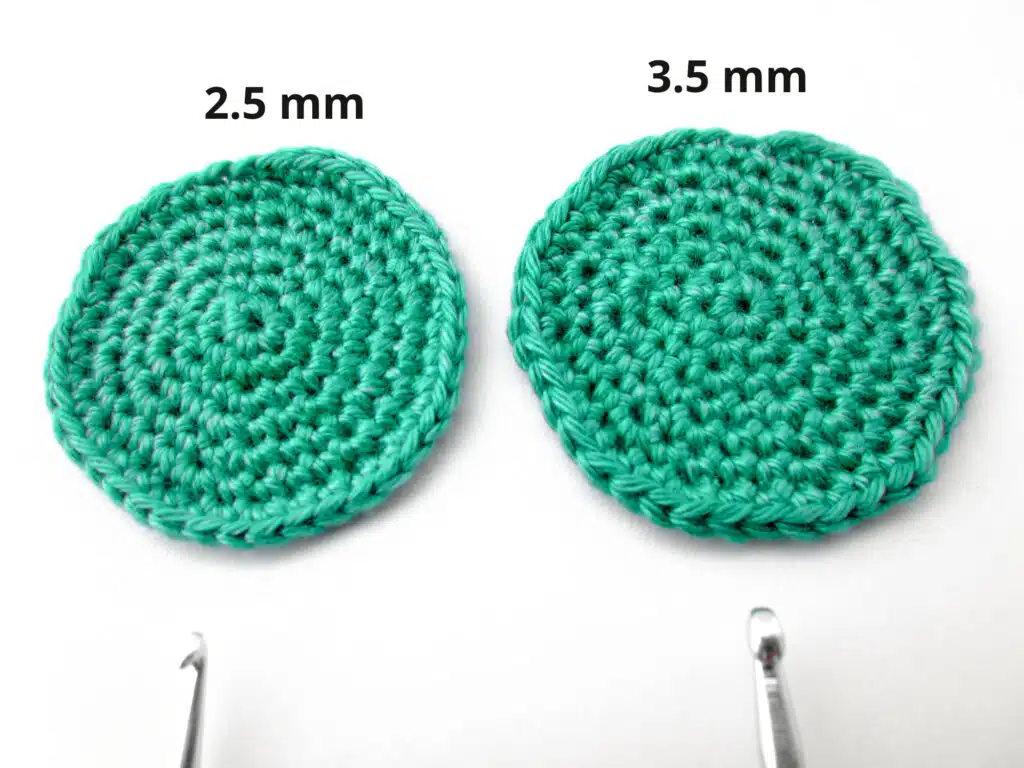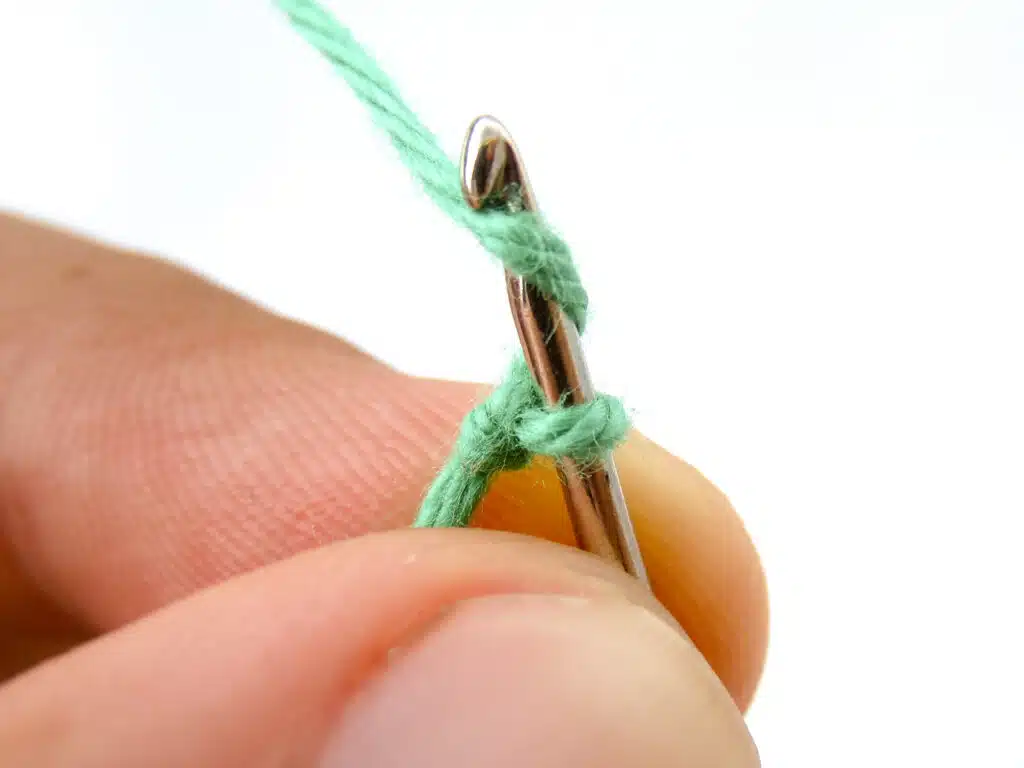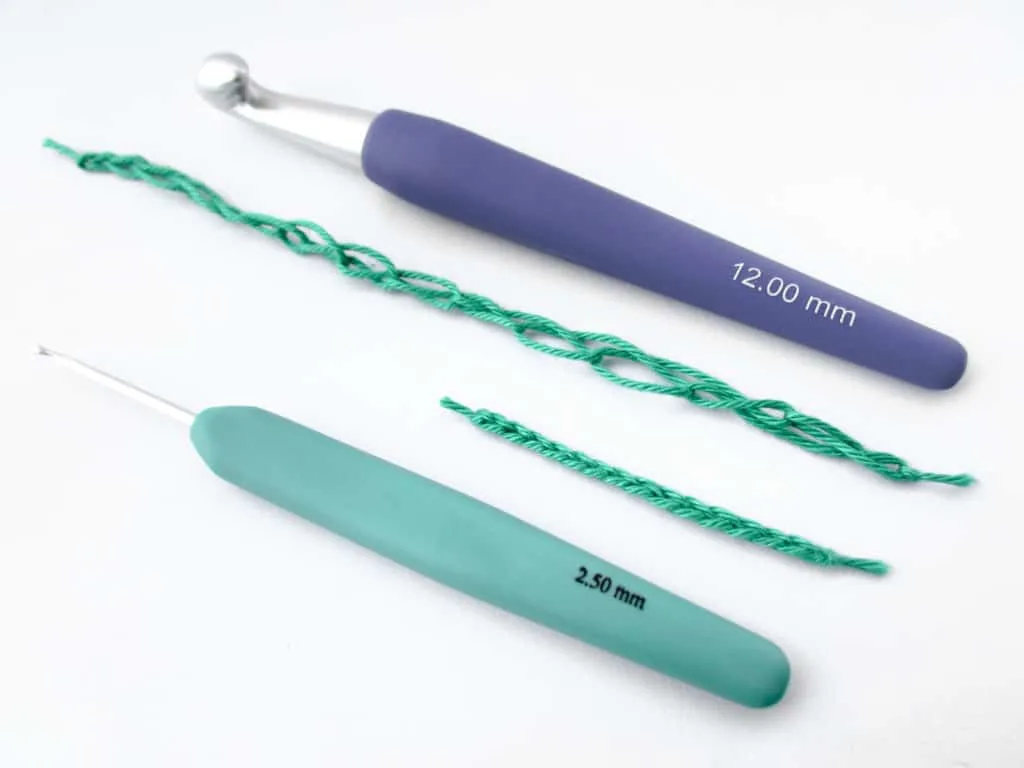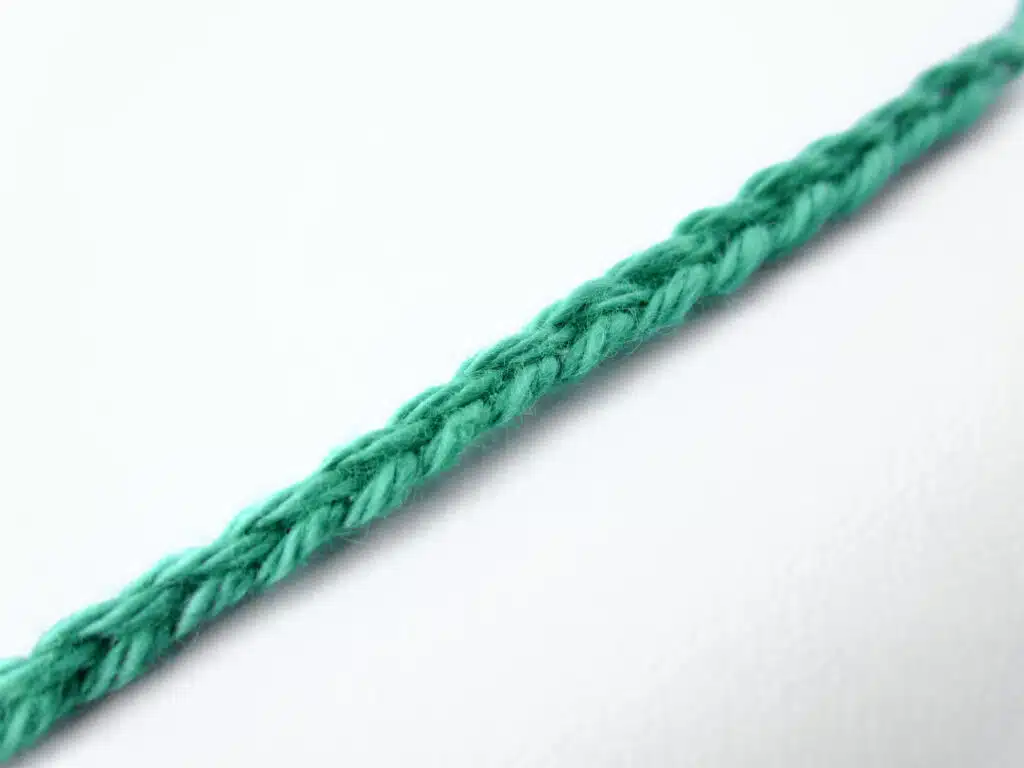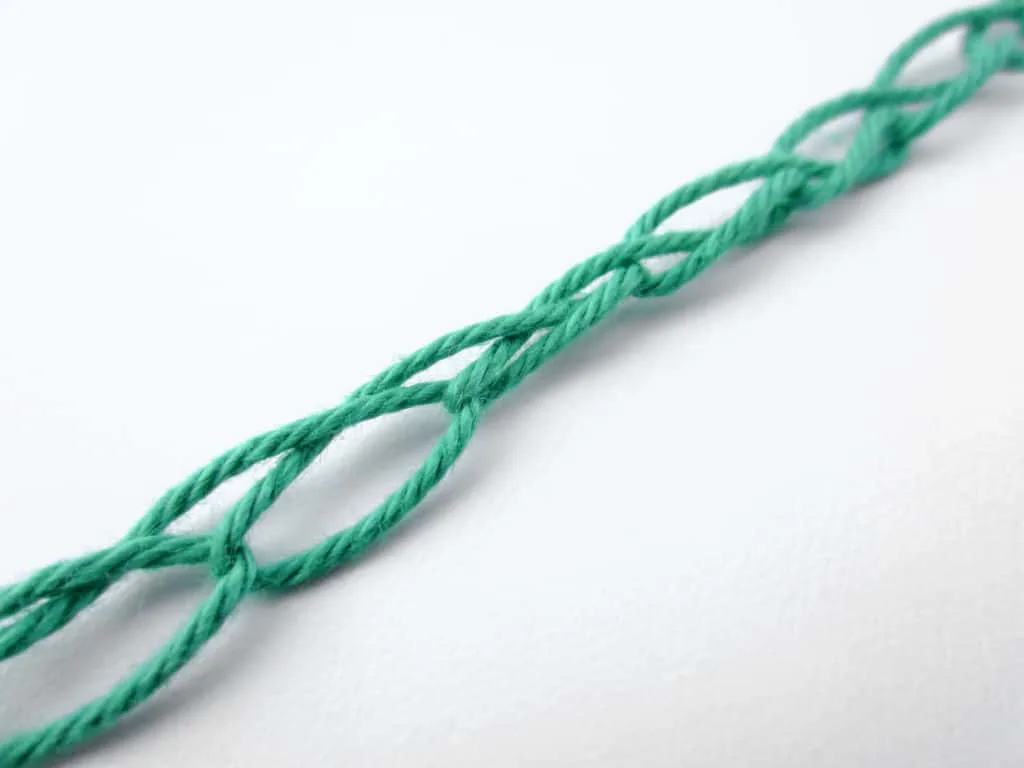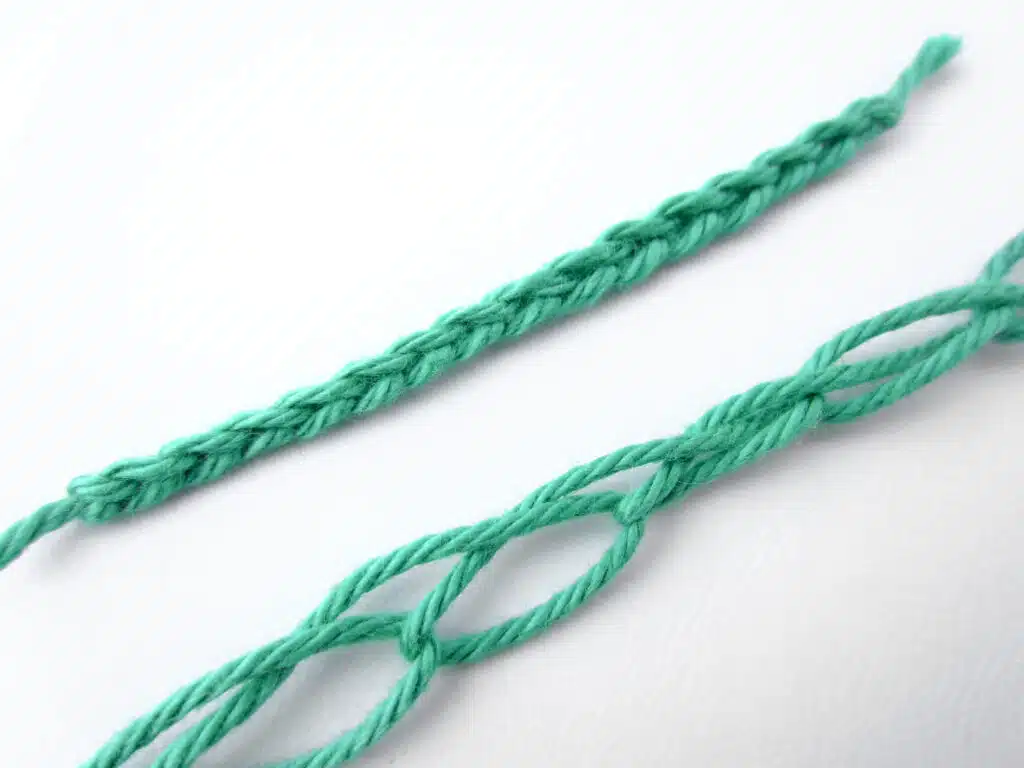To crochet, at least two essential things are needed: yarn and a matching crochet hook. However, choosing the right crochet hook depends on the yarn you are using and not the other way round.
You usually choose a yarn at the beginning of each project, because it is recommended in the instructions you are using or because you like the color/texture/structure of the yarn or whatever reason.
Only then do you choose a crochet hook that fits the yarn. In this case, only the actual size of the hook matters, neither the brand, design or model or material of the actual crochet hook that you prefer.
Yarn Labels
Now that you have selected your desired yarn, you are facing a wrapper around the yarn with a lot of labels on it. The amount of information on the wrapper may vary from brand to brand.
In the beginning, however, the most important thing is to know what crochet hook size you need for each yarn. In addition to the name of the yarn, the brand, the weight, length, knitting and crochet gauge, care instructions and much more information, you will also find the following sign, which indicates to you which crochet hook sizes are best suited for the respective yarn according to the manufacturer.
This will now probably raise some questions such as:
- What do all these numbers and figures mean?
- How do I know if I should use a 2.5 mm crochet hook or better a 3.5 mm crochet hook?
- Would that make any difference at all?
- Is it also possible to use other crochet hooks not listed here?
All this should be answered.
How to Find the Right Crochet Hook Size
First, we need to clarify what the individual numbers mean and how the strength or size of a crochet hook is measured. Crochet hooks are specified in different units depending on the country, indicating the size of each hook. The two most common systems are the metric system and the US system.
Metric System: Crochet hooks are given in millimeters by their thickness, sometimes with mm after the numeric value, sometimes without. The higher the value, the thicker the crochet hook.
Example: A “2.5” crochet hook represents a 2.5 mm fine crochet hook, while a crochet hook with the value “10” represents a thick, relatively large crochet hook that is 10 mm in size.
US System: The US system is a bit more difficult. Of course, the crochet hooks have the same sizes as in the metric system but are expressed in letters and/or numbers. This leaves out a direct idea how big or small, for example, a crochet hook of strength “E” could be because the letter is not a unit of measurement as millimeters is in the metric system.
However, just as in the metric system, whether the crochet hook is now labeled “B”, “C” or “D”, or “1”, “2” or “3”, the further back is the letter in the alphabet or higher the number, the larger the crochet hook and vice versa, that is, the smaller the number or the earlier the letter in the alphabet, the smaller/finer the crochet hook.
Below is an overview of the respective sizes in the US and metric system:
| Crochet hook sizes in millimeters (mm) | US crochet hook sizes |
| 1.00 mm | 10 steel |
| 1.25 mm | 8 steel |
| 1.50 mm | 7 steel |
| 1.75 mm | 4 steel |
| 2.00 mm | – |
| 2.25 mm | B/1 |
| 2.50 mm | – |
| 2.75 mm | C / 2 |
| 3.00 mm | – |
| 3.25 mm | D / 3 |
| 3.50 mm | E / 4 |
| 3.75 mm | F / 5 |
| 4.00 mm | G / 6 |
| 4.50 mm | 7 |
| 5.00 mm | H / 8 |
| 5.50 mm | I / 9 |
| 6.00 mm | J / 10 |
| 6.50 mm | K / 10.5 |
| 7.00 mm | – |
| 8.00 mm | L / 11 |
| 9.00 mm | M / 13 |
| 10.00 mm | N / 15 |
Differences when using different Crochet Hook Sizes
Now that you know what the numbers on the label mean in terms of crochet hook sizes, the question remains, which crochet hook should you use from the given range of possible crochet hooks? The smallest crochet hook? The biggest crochet hook? Does it make any difference or can you even use a crochet hook not mentioned on the label?
This will be illustrated with the yarn shown at the beginning of this article (the “Catania” by “Schachenmayr”). The Catania recommends a crochet hook size of 2.5 to 3.5 (mm) on the label.
You are now left to choose a crochet hook in this area. Since this is the recommendation of the manufacturer, you can be sure that one of these chosen sizes will not cause any problems and you will be able to crochet the yarn normally and without much difficulty.
But what’s the difference in hook size?
Rule of thumb: The smaller the crochet hook, the tighter/firmer the stitches and therefore a more “closed” appearance of the whole crochet project, without big gaps in it. The larger the crochet hook, the looser the stitches of your project become and the bigger the gaps between those stitches.
To illustrate this I crocheted a simple square with the “Schachenmayr Catania” in single crochet stitches using a 2.5, a 3.0 and 3.5 (mm) crochet hook.
And the same again in circles:
As you can see, the structure of the crochet pieces crocheted with the 2.5 crochet hook is much firmer and smaller and offers only a few and small gaps that let you see the white background. The crochet pieces made with the 3.0 crochet hook are in comparison clearly coarser and let something of the white background shine through.
Again all squares in comparison in the close-up:
And all circles in comparison in the close-up:
The most drastic difference is between the 2.5 piece and the 3.5 piece. Here you can see significantly larger gaps in the 3.5 and the piece looks more like a small net while the 2.5 piece in comparison looks like a more solid piece of fabric.
It’s up to you to decide whether to use a 2.5 crochet hook to create a stiffer and narrower stitch, a 3.0 crochet hook or even a 3.5 crochet hook to create a looser stitch pattern.
The choice is yours, there is no wrong decision in this regard, just personal taste and what you like and enjoy more, or what your project should look like in the end.
Of course, your own stitch pattern will always look a bit different than the one shown here, this is due to the different way in which everyone crochets. Some people pull their stitches very tight, some crochet a bit looser.
All this will affect your crocheting as well, but it does not change the fact that a narrower stitch pattern is generally created with a small hook and a more airy texture with a bigger hook.
For example, it is recommended for projects that are filled with polyfill after completion, such as crocheted dolls and amigurumi in general, to choose a smaller crochet hook so that the gaps in the texture are as small as possible or otherwise, the polyfill shows through.
If you want to crochet an airy summer scarf, for example, it is advisable to use a larger crochet hook to make the final result softer, looser and airier.
Using too Small or too Large Crochet Hooks
Of course, it is also up to you to use smaller or larger crochet hooks than indicated. Theoretically, you can use any crochet hook that is able to grab the yarn with the hook. For this reason, with ever smaller crochet hooks at some point, there are problems in the sense that the hook of the crochet hook is too small and is no longer able to hold the entire yarn and splits it instead and therefore can not be used.
Of course, this is different from yarn to yarn and you have to try out how small the crochet hook can be until you are no longer able to grab the yarn with the hook.
But things are different with larger crochet hooks. No matter how much larger the crochet hook is than the size indicated on the wrapper, the crochet hook will always be able to hold the yarn. Although theoretically there are no limits in this direction, a too large crochet hook represents quite another problem.
Since a very large crochet hook also produces very large stitches, the crocheted stitches can appear completely featureless and do not create a clear stitch pattern, making the actual crocheting incredibly complicated as you are permanently looking for the actual stitches in your work, the stitch pattern can shift and it just doesn’t look nice.
To illustrate this, here is a comparison of a chain made from the same yarn and with the same number of stitches, but crocheted once with a 2.5 mm and a 12 mm crochet hook.
As I said, there are theoretically no limits as to how big of a hook you use, the only question is if it really makes sense to do so.
You now know which crochet hook size to use for which yarn, how crochet hooks are labeled according to their size, how the different sizes affect the actual crochet project and the stitch pattern and what other options you have when choosing your crochet hook.
